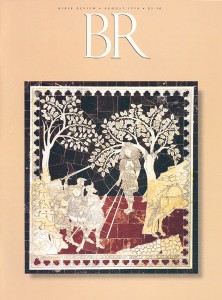Warning: This Lesson May Be Sexually Harassing
Sidebar to: Unintended Sex Leads to Unintended Fall
The lesson I was trying to teach by telling my class about the story in the Talmud involved the importance of intent in early Christian and early Rabbinic tradition. In the New Testament’s Sermon on the Mount, intent may seem tantamount to the act itself. In the Talmud, the act without the intent does not constitute a sin. In both instances intent is critical, however.
Much of the material in Matthew’s Sermon on the Mount (Matthew 5–7) is also found in Luke’s Sermon on the Plain (Luke 6:20–49), but Matthew arranges the material differently. He has a specific purpose in mind. In Matthew, Jesus, like Moses in the Old Testament, goes up onto a mountain; there Jesus teaches his disciples (Matthew 5:1). We know of Matthew’s special concern for Mosaic parallels, For example, in Matthew’s birth narrative (Matthew 1:18–2), the infant Jesus, like the infant Moses, is threatened by a ruler’s decree that all male children infant Moses, is threatened by a ruler’s decree that all male children should be killed. Jesus, with his family, flees to Egypt. This, Matthew tells us (quoting the Old Testament prophet Hosea), was to fulfill the prophecy: “Out of Egypt have I called my son” (Hosea 11:1). Once before Israel was saved by a leader out of Egypt.
It is clear that Matthew is portraying Jesus as the new Moses, a Moses who also gave the Law from a mountain (Exodus 19:20ff.).
Already a library member? Log in here.
Institution user? Log in with your IP address.

